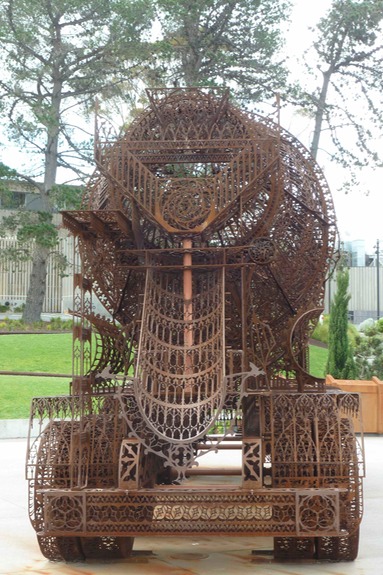 Bearing in mind we’re talking a November Thursday, which is hardly High Season, they’re doing OK there as well.
Bearing in mind we’re talking a November Thursday, which is hardly High Season, they’re doing OK there as well.
Some of those aboard could, of course, be locals who’ve felt like shelling out the $20 for the ferry ride rather than driving to a venue that will let you in for free admits If you are Tasmanian, and identify yourself as such (yes, yes, second head etc etc), though you may be asked for ID.
There’s not a great deal of obvious ostentation as you approach the ferry terminal, largely because the Museum is built into a hillside. Once you’ve disembarked and climbed the steps you’re literally almost on top of things.
Almost, because the restaurant and winery cellar door are just a tad higher. We headed straight inside because we were there for the art, weren’t we?
The most logical way to go would seem to be to descend to the lowest level and work your way up, and once we’d reached the bottom we were handed a gadget called The O, which, in retrospect, I’m inclined to think you’re better off without on the first go around.
The O owes its origin to a desire by the MONA management to do away with labels on and around the art work, which is understandable, but a tad tricky when you want to present an immersive experience but still need to let your visitors know what they’re seeing.
Actually, it goes a little further than telling you what you’re looking at. You can read about the art on display, listen to interviews with the artists and, most significantly, save your tour of the museum and then log in with your email address to recreate your entire path through the building at your leisure in the comfort of wherever you happen to be.
That gives the opportunity to revisit the experience, lingering over the things you liked and avoiding the things you didn’t, reading all the available interpretive material, share your experience with Facebook and Twitter friends and acquaintances, change your ratings, and that sort of thing thanks to a device that exploits “indoor positioning technology to provide proximity based artwork listings”.
In other words, The O uses your position in the gallery to figure out what you’re looking at